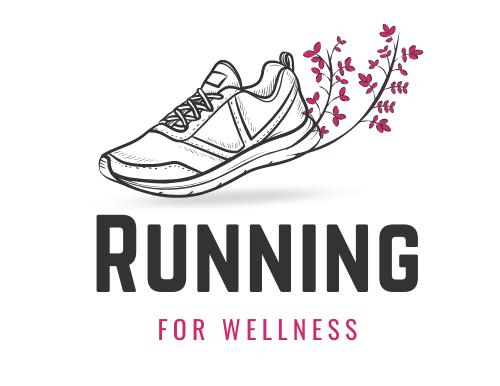Lacing up and hitting the pavement every day might sound like a commitment reserved for marathoners. But even a few minutes of running can offer significant health perks.
Studies suggest that just 5 to 10 minutes of moderate running daily can cut down the risk of heart attacks, strokes, and other common diseases.
And guess what? You don’t need to log in endless miles to reap the rewards. In fact, benefits tend to plateau at around 4.5 hours per week.
So, there’s no need to push beyond that unless you’re chasing a personal goal.
5 Top Health Benefits of Running Daily

1. Heart Health and Longevity
- Running strengthens the heart, improving circulation and lowering blood pressure.
- Studies show a 30–45% reduction in risk of cardiovascular disease among regular runners.
- Running regularly may add years to life expectancy.
2. Reduced Risk of Neurological Diseases
- Exercise, especially running, plays a key role in maintaining brain health.
- Running has been linked to a lower risk of Alzheimer’s and Parkinson’s disease.
- It improves memory, cognitive function, and mental clarity.
3. Cancer Prevention
- Running may help reduce the risk of developing certain types of cancer.
- A 2016 study found that those who engage in regular physical activity, including running, have a lower risk of developing colon and breast cancer.
4. Improved Sleep and Mood
- Running releases endorphins, reducing stress and anxiety.
- Morning runs, in particular, can lead to better sleep at night.
- A study on adolescents showed that running for 30 minutes daily improved their mood, concentration, and sleep patterns.
5. Weight Management and Metabolism Boost
- Running is an efficient way to burn calories and lose fat.
- It boosts metabolism, even after stopping the run (known as the “afterburn effect”).
Do You Need to Run Every Day?
While the benefits of running are undeniable, daily running isn’t necessary to improve fitness. A group of Dutch researchers found that running just 2.5 hours per week (or 30 minutes, five days a week) provides maximum longevity benefits.
Running every day can be beneficial, but it’s not mandatory for a healthy lifestyle. It’s also important to factor in rest days, especially for beginners or those recovering from injuries.
The Risks of Running Daily
Despite its many advantages, running daily comes with potential risks, particularly for those who don’t take proper precautions.
Overuse Injuries and Burnout
Running is a high-impact activity that puts stress on the joints, muscles, and bones. Over time, overuse injuries can occur, including:
- Shin splints – Pain in the lower leg due to excessive strain.
- Stress fractures – Small cracks in bones from repeated impact.
- Tendonitis – Inflammation in tendons, commonly affecting the knees and ankles.
- Runner’s knee – Pain around the kneecap due to overuse or poor form.
How to Prevent Running Injuries
4 Bulletproof Ways to Prevent Running Injuries – https://t.co/0iJZou5mdf
— Art of Manliness (@artofmanliness) January 3, 2025
- Invest in good running shoes and replace them every 300–500 miles.
- Increase mileage gradually to avoid sudden strain on muscles and joints.
- Alternate running with cross-training (cycling, swimming, yoga).
- Warm up before running and stretch afterward.
- Listen to your body—pain is a signal to rest.
If an injury develops, stop running and allow time for recovery. The RICE method (Rest, Ice, Compression, Elevation) can help with healing.
The Importance of Cross-Training
Runners benefit greatly from incorporating other types of workouts into their routine. Cross-training helps:
- Reduce the risk of injury by engaging different muscle groups.
- Improve flexibility and core strength, which enhances running performance.
- Prevent burnout by adding variety to workouts.
Best Cross-Training Options for Runners
- Cycling – Great for building leg strength without high impact.
- Swimming – Low-impact exercise that strengthens the whole body.
- Yoga – Increases flexibility and helps with recovery.
- Strength training – Builds muscle and prevents imbalances that lead to injuries.
How to Safely Start Running Every Day

Essential Running Gear
- A good pair of running shoes suited to individual foot type.
- Sweat-resistant clothing to stay comfortable.
- Reflective gear or a running light if running in low visibility conditions.
Beginner’s Weekly Running Plan
For those just starting, it’s important not to rush into daily runs. A gradual increase in frequency and intensity is best.
Day
Activity
Monday
20-minute run (easy pace)
Tuesday
Rest or cross-training (cycling/swimming)
Wednesday
25-minute run (moderate pace)
Thursday
Strength training or yoga
Friday
30-minute run (easy pace)
Saturday
Rest or cross-training
Sunday
Long run (40–60 minutes)
Advanced Runner’s Weekly Plan (10K Training Example)
Day
Activity
Monday
3-mile run
Tuesday
30-minute tempo run
Wednesday
Speed work (6 x 400 meters at mile pace)
Thursday
3-mile recovery run
Friday
Rest or easy run
Saturday
5-mile run
Sunday
6-mile run
Safety Tips for Runners
Running outdoors offers fresh air and mental benefits, but safety should always come first:
- Stick to well-lit, populated areas to avoid accidents.
- Wear bright colors and reflective gear for visibility.
- Let someone know your running route before heading out.
- Stay aware of your surroundings—watch for cars, cyclists, and obstacles.
Stretching: Before or After Running?

Stretching before a run isn’t always necessary, but warming up is crucial. Walking for a few minutes or jogging at a slow pace can help muscles prepare. Stretching after a run is more beneficial for flexibility and muscle recovery.
Final Thoughts
Running every day can improve physical and mental health, but it’s not essential to run daily to see results. Research suggests that just 30 minutes, five days a week is enough to increase longevity and lower disease risk.
To stay injury-free, runners should prioritize rest, cross-training, and proper gear. Even professional athletes take breaks—so listening to the body and adjusting workouts accordingly is key.
Not sure how often to run? Start small, find a sustainable routine, and consult a doctor if needed. After all, the goal is to enjoy running while staying strong and injury-free.
Related Posts:
- 25 Simple Running Motivation Tips To Get You Moving
- Top 400 Hilarious Gym Quotes to Keep You Motivated
- How Can You Start a Career as a Running Coach?
- How Far Is a Half Marathon? Everything You Need to Know
- How Long Does It Take to Train for a Half Marathon?
- Half Marathon Training Plan for Beginners - Simple…







